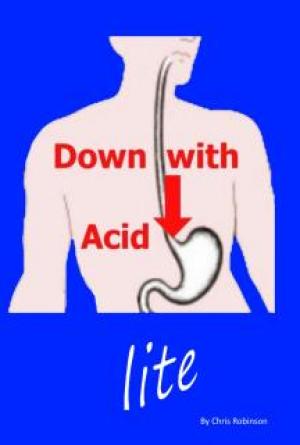
Stress-Free
Living
A Guide to Mindfulness and Stress
Management Techniques
ebook outline
I. Introduction
Explanation of stress and its effects on the body and mind Overview of mindfulness and its benefits for stress management
II. Understanding Stress
Types of stress (acute, chronic, positive, negative) Common causes of stress
The physiological effects of stress on the body
III. Mindfulness and Stress Management Explanation of mindfulness and how it works Mindfulness practices for stress management (meditation, deep breathing, yoga, etc.)
Mindfulness in daily life: techniques for integrating mindfulness into daily activities
IV. Coping Strategies for Stress Identifying triggers and learning to manage them Time management and goal setting
Building a support system
Exercise and physical activity
Positive self-talk and visualization
Relaxation techniques (progressive muscle relaxation, guided imagery, etc.)
V. Conclusions
Summary of key points
Additional resources for stress management and mindfulness
Encouragement to implement the techniques and strategies learned in the book.

I. Introduction
A. Explanation of stress and its effects on the body and mind: Stress is a natural response to challenging situations, such as work deadlines, financial troubles, or relationship conflicts.
When we experience stress, our bodies release hormones such as cortisol and adrenaline, which prepare us to take action and defend ourselves. While some stress can be beneficial, chronic stress can have negative effects on our physical and mental health. These effects can include headaches, muscle tension, fatigue, irritability, and depression. Stress can also contribute to the development of chronic health conditions such as heart disease and type 2 diabetes.
B. Overview of mindfulness and its benefits for stress management:
Mindfulness is the practice of being present and fully engaged in the current moment, without judgment. Mindfulness can be cultivated through various techniques such as meditation, deep breathing, and yoga. Research has shown that mindfulness can have a positive impact on stress management. It can help reduce feelings of anxiety and depression, lower levels of the stress hormone cortisol, and improve overall well-being.
Additionally, mindfulness can help individuals develop a greater sense of self-awareness, which can aid in identifying triggers of stress and developing coping mechanisms.
Mindfulness can also help individuals develop a greater sense of self-awareness, which can aid in identifying triggers of stress and developing coping mechanisms. It can also help individuals develop a greater sense of self-awareness, which can aid in identifying triggers of stress and developing coping mechanisms. Mindfulness also helps to improve emotional regulation, decrease rumination, and increase cognitive flexibility. With regular practice, mindfulness can improve resilience to stress and build a sense of inner peace.
Mindfulness-based interventions such as Mindfulness-Based Stress Reduction (MBSR) have been found to be effective in reducing symptoms of stress and anxiety, as well as improving overall well-being. Furthermore, mindfulness techniques can be easily integrated into daily life, making it an accessible and effective tool for managing stress.

II. Understanding Stress
A. Types of stress (acute, chronic, positive, negative) Acute stress: Acute stress is the normal, healthy response to a specific event or situation. It is a short-term response that can be beneficial, as it allows us to take action and react quickly to potentially dangerous situations.
Chronic stress: Chronic stress is long-term stress that occurs over an extended period of time. It can result from ongoing stressors such as financial troubles, job dissatisfaction, or a difficult relationship. Chronic stress can have negative effects on physical and mental health.
Positive stress: Positive stress, also known as eustress, is the stress response that occurs when we are excited or motivated by an event or situation. It can be beneficial and can help us to perform at our best.
Negative stress: Negative stress, also known as distress, is the stress response that occurs when we feel overwhelmed or unable to cope with a situation. It can have negative effects on physical and mental health.

B. Common causes of stress:
Work-related stress: Meeting deadlines, dealing with difficult coworkers or supervisors, and job insecurity can all contribute to stress.
Financial stress: Money troubles, such as living paycheck to paycheck or dealing with debt, can cause stress.
Relationship stress: Difficulties in personal relationships, such as conflicts with a partner or family member, can contribute to stress.
Health-related stress: Chronic health conditions, as well as the stress of caring for a loved one with a health condition, can cause stress.
Life events: Major life changes such as moving, starting a new job, or getting married can also cause stress.

C. The physiological effects of stress on the body: When we experience stress, our bodies release hormones such as cortisol and adrenaline. These hormones prepare us for the
"fight or flight" response, a survival mechanism that allows us to react quickly to potentially dangerous situations. This response can cause physical effects such as increased heart rate and blood pressure, muscle tension, and a suppressed immune system.
Prolonged or chronic stress can lead to the development of chronic health conditions such as heart disease, type 2 diabetes, and obesity. Stress can also contribute to mental health issues such as anxiety and depression.

III. Mindfulness and Stress
Management
A. Explanation of mindfulness and how it works: Mindfulness is the practice of being present and fully engaged in the current moment, without judgment. It involves paying attention to thoughts, emotions, and physical sensations in a non-judgmental way. Mindfulness can be cultivated through various techniques such as meditation, deep breathing, and yoga. By focusing on the present moment, mindfulness can help individuals become more aware of their thoughts and emotions, allowing them to respond to stressors in a more effective way.

B. Mindfulness practices for stress management: Meditation: Meditation is a mindfulness practice that involves sitting quietly and focusing on the present moment. It can be done through guided meditations, or by simply paying attention to one's breath.
Deep breathing: Slow, deep breathing is a simple mindfulness technique that can be done anytime, anywhere.
It can help to slow the heart rate, lower blood pressure, and calm the mind.
Yoga: Yoga is a practice that combines physical postures, breathing exercises, and meditation. It can help to reduce stress by promoting relaxation and balance in the body and mind.

C. Mindfulness in daily life: techniques for integrating mindfulness into daily activities: Take a mindful walk: Instead of rushing through your walk, take the time to notice the sights, sounds, and sensations around you.
Practice mindful eating: Pay attention to the taste, texture, and smell of your food.
Mindful listening: Listen attentively to others when they speak, and avoid multitasking.
Mindful communication: Speak with compassion and empathy, and avoid judgment and criticism.
Mindful self-care: Take time to care for yourself, whether it be through exercise, reading, or simply taking a relaxing bath.
By incorporating mindfulness into daily life, individuals can improve their ability to cope with stress and improve their overall well-being.

IV. Coping Strategies for Stress
A. Identifying triggers and lea rning to manage them:
Identifying the specific events , situations, or thoughts that trigger stress is the first step in learning to manage them. Once identified, individuals can develop strategies to either avoid or cope with these triggers.
B . Time management and goal setting:
Effective time management and goal setting can help reduce stress by providing a sense of control and accomplishment.
Prioritizing tasks and setting realistic deadlines can help individuals feel more organized and in control.

C. Building a support system:
Building a network of supportive family and friends can provide a source of emotional support and can help to reduce feelings of isolation and helplessness.
D. Exercise and physical activity:
Regular physical activity can help to reduce stress by releasing endorphins, which are chemicals in the brain that act as natural painkillers and mood elevators.
E. Positive self-talk and visualization:
Talking to oneself in a positive and encouraging way can help to counteract negative thoughts and feelings. Visualization, or creating a mental image of a positive outcome, can also help to reduce stress.

F. Relaxation techniques:
Relaxation techniques such as progressive muscle relaxation, guided imagery, and deep breathing can help to reduce muscle tension and calm the mind. These techniques can be practiced in a quiet, comfortable place and can be done in as little as five minutes.
By implementing these coping strategies, individuals can learn to manage stress and improve their overall well-being. It's important to note that different people have different stressors and coping strategies that work best for them, it's always recommended to try out different methods and see which one works for you.

V. Conclusions
A. Summary of key points:
In this book, we have discusse d the effects of stress on the body and mind and the benefits of mindfulness for stress management. We have explored different types of stress, common causes, and the physiological effects of stress on the body. We have also discussed mindfulness practices such as meditation, deep breathing, and yoga, and how to integrate mindfulness into daily life. Additionally, we have covered coping strategies for stress such as identifying triggers, time management, building a support system, exercise, positive self-talk, and relaxation techniques.

B. Additional resources for stress management and
mindfulness:
There are many resources available for those who want to learn more about stress management and mindfulness. Websites such as the American Psychological Association (APA) and the American Mindfulness Research Association (AMRA) provide valuable information and resources on these topics. Books, articles, and videos on stress management and mindfulness can also be found online.

C. Encouragement to implement the techniques and strategies
learned in the book:
The techniques and strategies discussed in this book can be effective in managing stress, but they do require practice and commitment. It is important to remember that stress management is a continuous process and that it is important to make time for self-care. By implementing the techniques and strategies learned in this book, individuals can improve their ability to cope with stress and improve their overall well-being.
Remember to be patient with yourself and not to be discouraged if you don't see immediate results, it's a process.





























